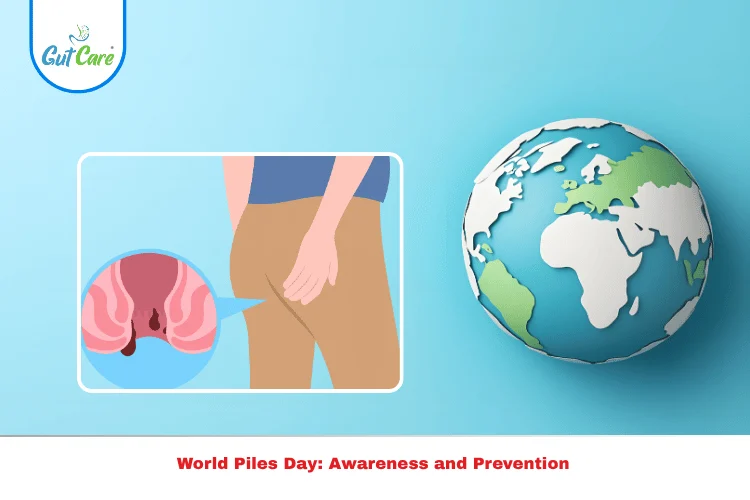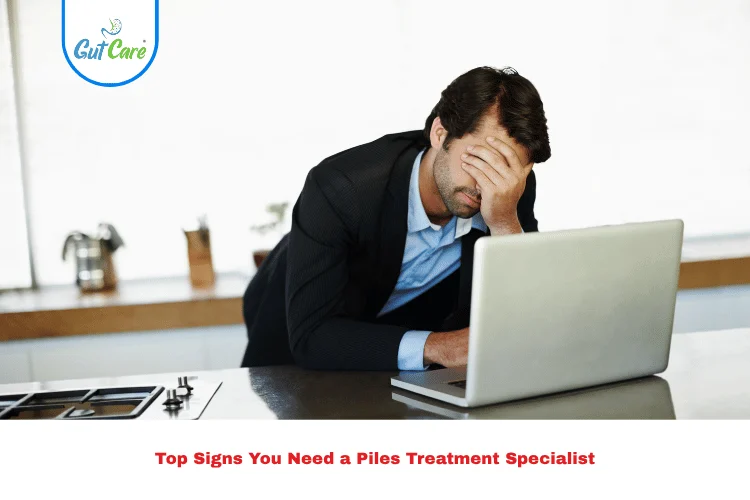Introduction
Millions of people worldwide suffer from piles, also referred to as hemorrhoids. Although piles can be painful, uncomfortable, and embarrassing, many people are unaware of their early warning signs until the condition has gotten worse. Early detection of piles symptoms can help you effectively manage the symptoms and seek treatment in a timely manner. We’ll go over the typical signs of piles in this blog, how to spot them, and when to see a doctor to prevent problems.
What Are Piles (Hemorrhoids)?
Piles are inflamed blood vessels in the lower rectum and anus. They may arise from increased pressure within the region, which can result from such causes as straining during bowel movements, pregnancy, obesity, or chronic constipation. Piles are of two types:
- Internal Piles: These form within the rectum and are typically painless. They may bleed and cause discomfort while passing stools.
- External Piles: These form outside the anus and may be painful, particularly if they become irritated, thrombosed, or prolapsed.
Both forms of piles can produce a range of symptoms, and early identification of the signs of piles will avoid further complications.
Common Signs of Piles
The symptoms of piles may differ based on the severity and type of condition. These are the most prevalent symptoms to look out for:
1. Rectal Bleeding
One of the most apparent symptoms of piles is rectal bleeding. You might find tiny amounts of bright red blood on the toilet paper, in the toilet bowl, or on your stool. This is especially prevalent with internal piles.
2. Itching Around the Anus
Itching or irritation in and around the anus is also a frequent symptom of piles. It may result from the skin surrounding the anus getting irritated as a result of enlarged veins or due to the secretion of mucus. The itching can get intensified after defecation.
3. Pain or Discomfort
Pain is a frequent symptom, particularly with external piles. If a pile is thrombosed (a blood clot develops within it), it may be severely painful and cause swelling around the anus. The pain tends to be worse when sitting down, on passing stools, or after wiping.
4. Swelling Around the Anus
You might get a small painful lump near the anus, and this may signal external piles. The swelling becomes painful when walking or sitting down.
5. A Feeling of Fullness or Incomplete Evacuation
A few patients with internal piles have a sense of incomplete evacuation after a bowel movement. Fullness or having to pass more stool may even remain after the bathroom visit.
6. Mucus Discharge
A discharge with mucus around the anal region is another frequent symptom of internal piles. It happens when the enlarged rectal veins expel mucus, which causes irritation and itching at the affected area.
External vs. Internal Piles: Symptoms Comparison
Both internal and external piles are painful, but present themselves differently:
- External Piles: These occur around the anus and are visible or palpable as lumps or inflamed skin. They are usually painful, particularly if thrombosed.
- Internal Piles: These occur within the rectum and are usually painless. The most frequent symptoms are rectal bleeding and a feeling of fullness or irritation in the rectum.
While internal piles will normally remain unobserved until bleeding is observed, external piles tend to be more conspicuous on account of their swelling and their pain.
Learn about Key Differences of Internal vs External Hemorrhoids
Warning Signs of Piles You Shouldn’t Ignore
If you notice any of the following warning signs of piles, it’s essential to consult a doctor immediately:
- Heavy or Continued Bleeding: In case of bleeding for longer than a few days or heavy bleeding, it may be indicative of a worse condition.
- Severe Pain or Thrombosis: If the pain due to external piles becomes intolerable, or if thrombosis occurs, it’s important to get treatment.
- Prolapsed Piles: If a prolapsed internal pile (falls out of the rectum), it can need to be treated medically.
- Changes in Bowel Habits: If there is a noticeable change in bowel habits or recurring discomfort, it might be indicative of something severe.
When to See a Doctor for Piles Symptoms
If you have any of the following signs of piles, it’s critical to visit your doctor:
- Bleeding that persists in the rectum
- Severe pain in and around the anus
- Lumps or swelling that remain persistent
- Sense of pressure or fullness within the rectum
- History of hemorrhoids and increasing symptoms
While piles seldom are a grave condition, having a professional do something can eliminate complications and help you gain some relief from distress.
How Piles Are Diagnosed
A healthcare provider typically diagnoses piles through a physical examination. For external piles, a simple visual inspection may be enough. For internal piles, the doctor may perform a digital rectal exam or use an anoscope to examine the inside of the rectum. In some cases, additional tests may be recommended to rule out other conditions.
Natural Remedies and Treatments for Piles
While some cases of piles can be resolved with conservative measures, others may require medical treatment. Here are some natural remedies and treatments for piles:
1. Comfortable Sitz Baths
Pile-related pain and swelling can be lessened by soaking in warm water for ten to fifteen minutes multiple times a day.
2. Increase Consumption of Fiber
Eating a diet high in fiber can help ease the symptoms of piles by preventing constipation and easing the strain during bowel movements.
3. Topical Ointments and Creams
Itching and swelling can be lessened with over-the-counter creams that contain hydrocortisone or witch hazel.
4. Maintaining Hydration
By reducing constipation and softening stools, drinking lots of water can ease pile pressure.
5. Refrain from straining when bowel movements occur.
Long periods of time spent sitting on the toilet and straining to pass stool can exacerbate piles.
In more severe cases, medical treatments such as rubber band ligation, sclerotherapy, or even surgery may be recommended.
Know the Top 10 Home Remedies for Piles
Conclusion: Early Detection and Treatment of Piles
Identifying the warning signs of piles early helps prevent more complications and more effective treatment. If you experience some symptoms like rectal bleeding, itching, or pain, it’s crucial that you see a healthcare provider. By knowing the warning signs and getting treated early, you can control the condition and get relief.
Visit GutCare Clinics in Bangalore for expert care.
FAQs
1. What causes piles?
Increased rectal pressure, which may be caused by sitting for long periods, constipation, pregnancy, or straining, causes piles.
2. Are piles dangerous?
While they can be very painful, piles themselves are not dangerous. However, if left untreated, they can worsen and lead to complications.
3. How do I prevent piles from becoming worse?
The aggravation of piles can be prevented by avoiding constipation, taking more fiber, taking a lot of water, and avoiding straining at stool.
4. Can piles be treated at home?
Yes, mild piles can be treated at home by using natural treatments such as warm baths, dietary foods that contain a lot of fiber, and creams applied over the area. In severe cases, medical care may be needed.




